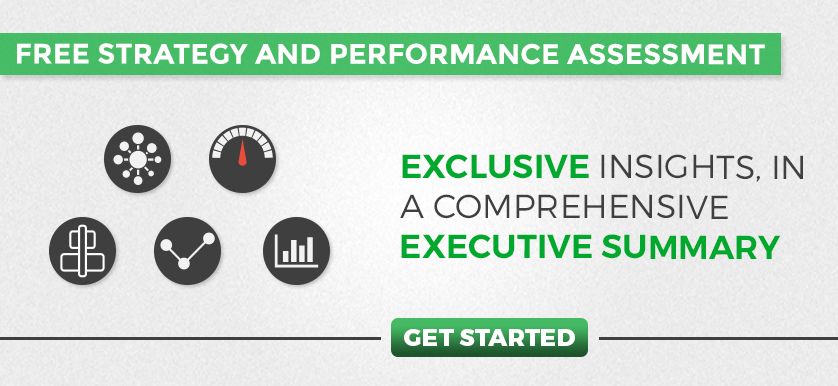A Strategic Lexicon: Comparing Key Concepts
Image Source: Freepik
In an age characterized by rapid technological advancements and market shifts, the importance of strategy—whether corporate or business—cannot be overstated. A well-defined strategy is a roadmap that guides organizations through complex market dynamics and helps them identify opportunities while mitigating risks. Effective planning and execution of this roadmap hinges on a thorough examination of its core concepts. This approach starts with a clear understanding of the relevant terms as well as how concepts differ, complement, connect, and contribute to the entire process.
Business Strategy and Corporate Strategy
Both business strategy and corporate strategy are essential for a company’s success. However, they differ significantly in scope, focus, and decision-making levels.
Business Strategy
Business strategy encompasses the methods an organization employs to achieve its goals within a specific business unit. It serves as a framework for generating value through the production and delivery of goods or services while focusing on effective competition within a particular market. This strategy includes allocating resources to execute the chosen approach as well as making decisions regarding the capabilities and activities crucial for market success. By concentrating on specific units, business strategies enable organizations to respond smoothly to market changes and customer demands.
Corporate Strategy
Conversely, corporate strategy outlines the overall plan for a corporation with multiple business units, focusing on achieving objectives at the highest strategic level. This broader approach manages the business portfolio to create value and ensure alignment with the corporation’s vision. It involves making critical decisions about where to compete across various industries and markets, including which businesses to enter or exit and considerations regarding diversification and strategic alliances. This high-level perspective is essential for guiding the organization toward sustainable growth and profitability.
Despite their differences, both business and corporate strategies are vital for a corporation’s overall success. Combined, they serve as a comprehensive framework for navigating the complexities of the modern business landscape.
Read More >> Democratizing Strategy Planning to Improve Employee Engagement
Vision Statement and Mission Statement
Vision and mission statements serve distinct but complementary purposes, together forming a comprehensive framework for an organization’s direction.
Vision Statement
A vision statement articulates an organization’s long-term aspirations and desired future state. It inspires stakeholders by outlining what the organization aims to achieve in the future. Typically broad and aspirational, vision statements paint a clear picture of ultimate goals. For instance, Rockwater Energy Solutions’—a subsidiary of Brown & Root/Halliburton—vision statement is “As our customers’ preferred provider, we shall be the industry leader in providing the highest standards of safety and quality to our clients.”
Mission Statement
In contrast, a mission statement defines the organization’s current purpose and the specific actions it takes to achieve its objectives. It outlines what the organization does, who it serves, and how it operates daily. Mission statements are more concrete and focused, often detailing core values and guiding principles. For example, LinkedIn’s mission is “to connect the world’s professionals to make them more productive and successful.”
Together, the vision statement establishes long-term goals while the mission statement describes current objectives necessary to achieve those goals. This dual framework guides organizational activities and aligns stakeholders toward a common purpose.
Strategic Planning and Operational Planning
Synchronizing strategic planning and operational planning promote consistency in decision-making, but they serve different purposes and focus on varied timeframes.
Strategic Planning
Strategic planning involves outlining the future direction of an entity, which can be an organization, department, or individual. This process includes identifying goals and determining the methods to achieve them.
Typically spanning three to five years, strategic planning is a long-term process that evolves, allowing for annual adjustments. This plan is developed by top management, including the leaders, board members and other executives, while considering the external business environment, such as competition and market trends.
For a strong strategy, strategic planning should adopt a systematic approach. This includes clarifying the organization’s current state, analyzing the external environment, defining its mission and values, developing strategic themes, setting objectives with key performance indicators (KPIs), identifying initiatives, and regularly reviewing the strategic plan to ensure alignment and adaptability.
Operational Planning
Operational planning supports the strategic plan by aligning day-to-day activities with tactical execution. It plays a crucial role in achieving organizational goals through detailed short-term plans specific to departments. An effective operational plan includes several essential characteristics to ensure successful execution. It starts with an introduction and situation report, followed by an overview of tasks, objectives, and overarching goals.
The plan outlines the methods to be used, necessary resources (personnel, equipment, and supplies), and timelines with benchmarks and milestones. It defines the administrative structure, operating budget, and funding acquisition strategy. Roles and responsibilities are clearly specified, including required competencies for personnel. Monitoring mechanisms are established with relevant indicators. Finally, the plan includes provisions for reporting, all contributing to a comprehensive framework that aligns daily operations with strategic objectives.
SWOT Analysis and PESTLE Analysis
SWOT and PESTLE analyses are strategic tools designed to evaluate the internal and external forces affecting organizations. By using SWOT analysis to examine an organization’s internal capabilities and PESTLE analysis to assess its external environment, organizations can develop strategies to proactively address challenges and effectively plan for future initiatives.
SWOT Analysis
SWOT analysis identifies an organization’s internal strengths and weaknesses, as well as external opportunities and threats. This assessment informs strategic decisions by emphasizing strengths, addressing weaknesses, and capitalizing on opportunities while mitigating potential threats.
PESTLE Analysis
PESTLE analysis evaluates external factors influencing an organization, including political, economic, social, technological, legal, and environmental aspects. This framework helps assess a company’s objectives by identifying and analyzing crucial drivers of change in the external environment.
Both SWOT and PESTLE analyses serve as effective starting points for strategy formulation, offering valuable insights for business development and marketing efforts. Conducting these analyses enhances an organization’s understanding of its competitors and provides the insights necessary to gain a competitive advantage. Approaching them requires realism and attention to detail.
OKRs and the BSC
After defining their strategies through strategic and operational planning, organizations must measure progress effectively. Both objectives and key results (OKRs) and the balanced scorecard (BSC) follow a similar process of setting objectives, tracking progress, analyzing results, and making data-driven decisions.
OKRs and the BSC emphasize the importance of establishing clear objectives, promoting transparent communication about goal achievement, serving as strategic tools, and ensuring measurability across all organizational levels. This approach enables the effective communication of priorities throughout the organization.
Objectives and Key Results
OKRs are a goal-setting framework that organizations use to define and track their objectives and associated outcomes. The objectives component outlines what an organization aims to achieve, while the key results specify measurable outcomes indicating progress toward those objectives.
While both OKRs and the BSC are strategic management tools, they differ in several key aspects. OKRs prioritize ambitious, aspirational goals and encourage a bottom-up, decentralized approach to goal-setting and achievement. They often have a shorter-term focus, with quarterly reviews and adjustments. Additionally, OKRs emphasize intrinsic motivation and empower teams to take ownership of their work.
Furthermore, OKRs are best suited for organizations that thrive on innovation, agility, and employee empowerment. They are ideal for fast-paced, dynamic environments where adaptability is key. By focusing on ambitious goals and empowering teams, OKRs can drive significant growth and transformation.
Balanced Scorecard
In contrast, the BSC is a framework aimed at managing strategy in a balanced way across four key perspectives: financial, customer, internal processes, and learning and growth. It offers clarity regarding strategy and ensures that activities are aligned with strategic objectives.
The BSC typically focuses on more traditional, top-down, and centralized approaches to strategic planning and execution. They often involve longer-term objectives and KPIs, and they prioritize a balanced perspective that considers various aspects of value creation. While OKRs are more flexible and adaptable, the BSC provides a more structured and standardized framework for strategic management.
The BSC is well-suited for organizations that prioritize stability, control, and long-term planning. It is particularly effective in regulated industries or large, complex organizations that require a structured approach to performance management.
Read More >> Charting a Course: A Step-by-Step Guide to Deliberate Strategic Planning
Shared Understanding
Knowing the differences between them will enable organizations to choose the right tool for the job and collaborate smoothly, eliminating uncertainty and driving efficiency. With this collective understanding, organizations can steer their roadmaps with goal-driven direction and purposeful synchronization.

Tags: strategic lexicon, strategy concepts, strategy terms





